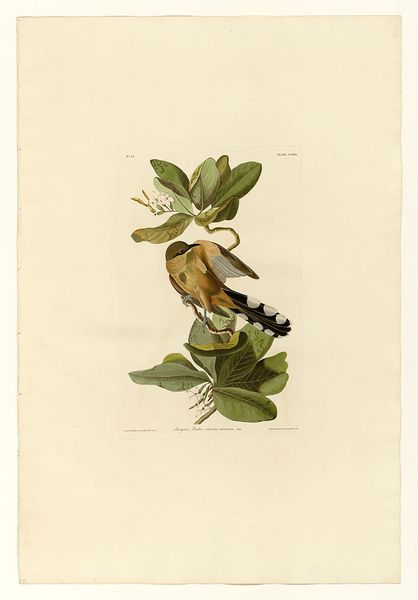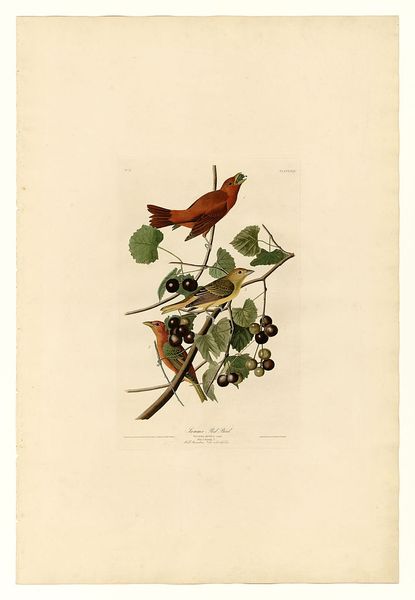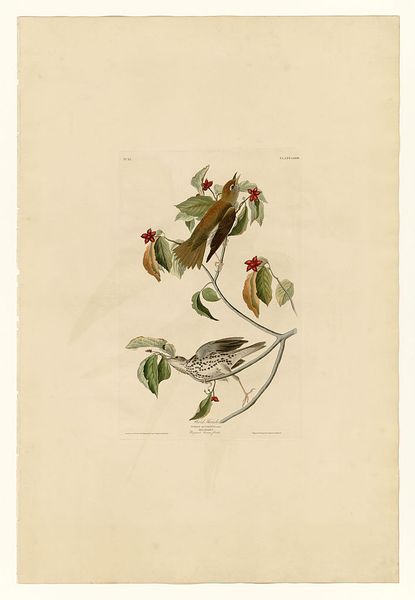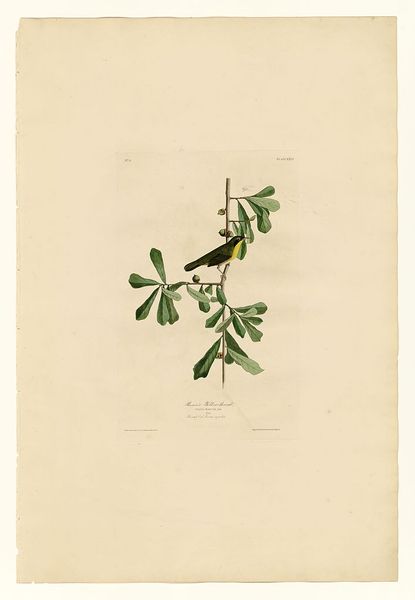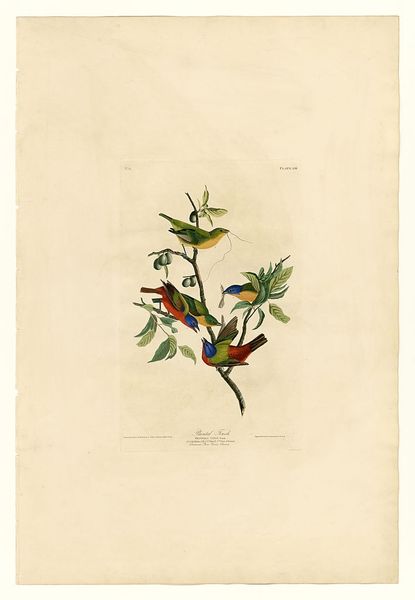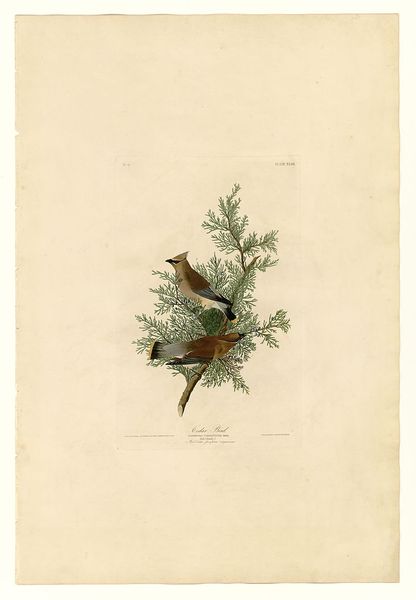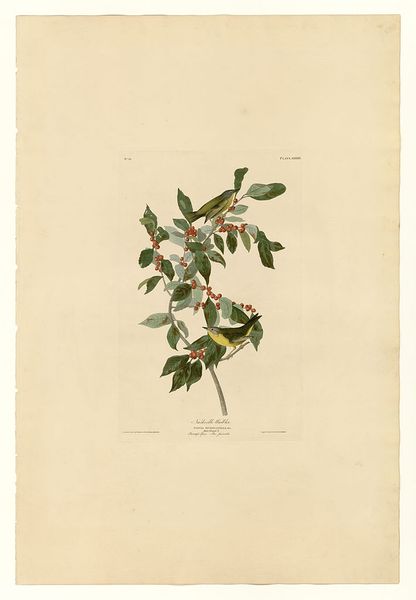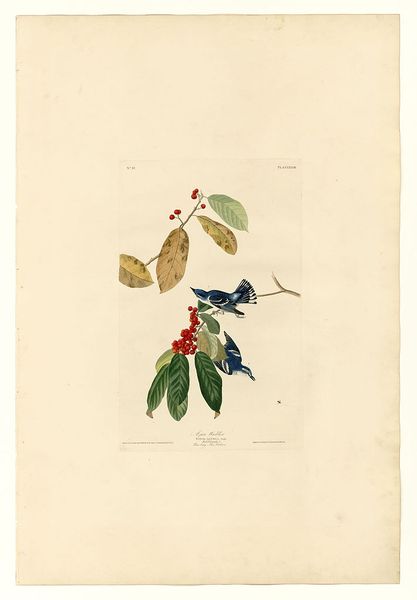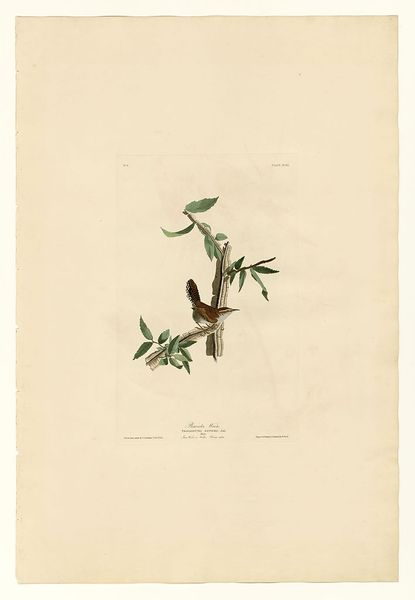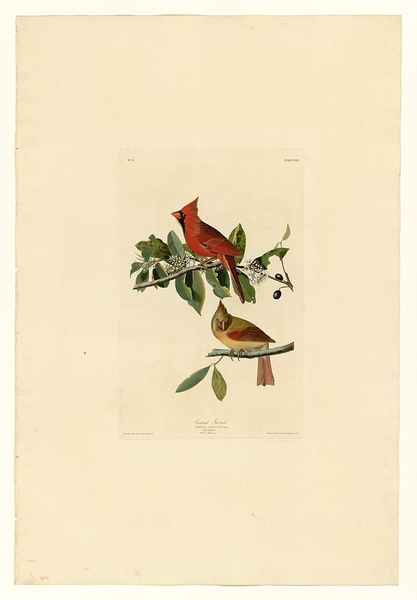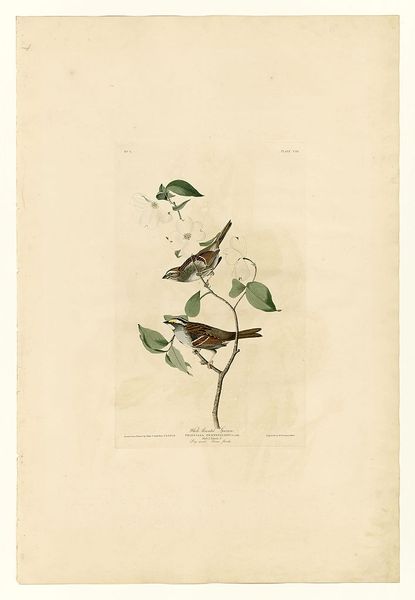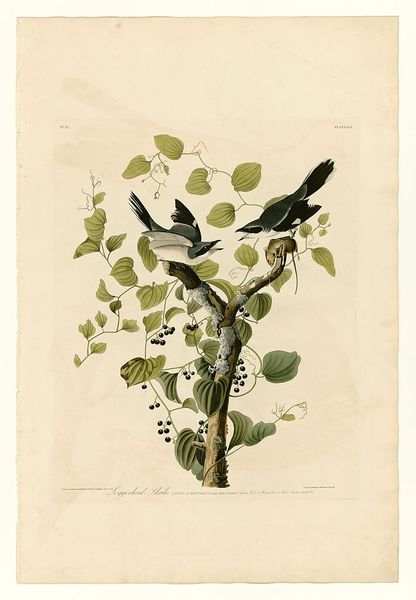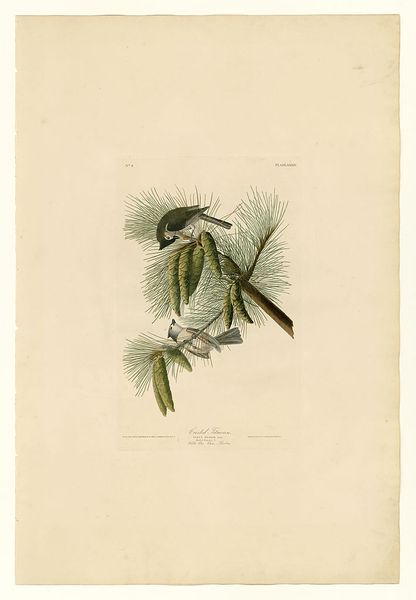
painting, watercolor
#
portrait
#
painting
#
watercolor
#
romanticism
#
watercolour illustration
#
genre-painting
#
botany
#
naturalism
#
botanical art
Copyright: Public domain
Curator: Today, we are observing "Plate 170 Gray Tyrant," by John James Audubon, a watercolor illustration portraying a small bird perched upon flowering branches. Editor: The composition immediately strikes me. There’s a stillness, a poised symmetry in the arrangement of bird and plant. The limited palette creates a soft, almost dreamlike quality. Curator: It’s interesting you say that, because Audubon's work has historically been examined for scientific accuracy but this particular illustration speaks volumes about colonial encounters. The “tyrant” flycatcher, like many species named at the time, reflects a human-centric and arguably oppressive worldview. We project our own biases into these naming practices. Editor: True, but within that worldview, there’s still meticulous attention to form. Look at the gradations of gray in the bird’s plumage, the subtle pinks and greens in the blossoms. Each element, while scientifically rendered, contributes to an aesthetic harmony. It also reflects back on romanticism’s tendency to want to display knowledge of the natural world. Curator: Exactly. Consider the choice of the flowering branch. It is a plant whose introduction to certain environments dramatically shifted local ecosystems, causing some damage. Audubon isn't just capturing a pretty bird; he's also highlighting these dynamics between a species and their changing world, often disrupted by settler colonialism. Editor: The texture and translucency that watercolor gives to the leaves… that’s more than just a simple scientific record. He uses light and shadow masterfully, creating a three-dimensional feel. He brings a painterly quality to scientific documentation. Curator: That technical skill is crucial, but the illustration is a reflection of social narratives tied to exploration and naming. “Tyrant” itself hints at a hierarchy, reinforcing colonial views of humans, specifically white men, in dominion over the natural world. It asks us to examine how scientific endeavors themselves can be laden with ideology. Editor: A valid point. Perhaps by recognizing these dual layers of artistry and colonial implications we arrive at a more enlightened reading of Audubon. Curator: Indeed, engaging with artworks like "Gray Tyrant" calls for critical reflection on how intertwined aesthetics and power truly are.
Comments
No comments
Be the first to comment and join the conversation on the ultimate creative platform.
